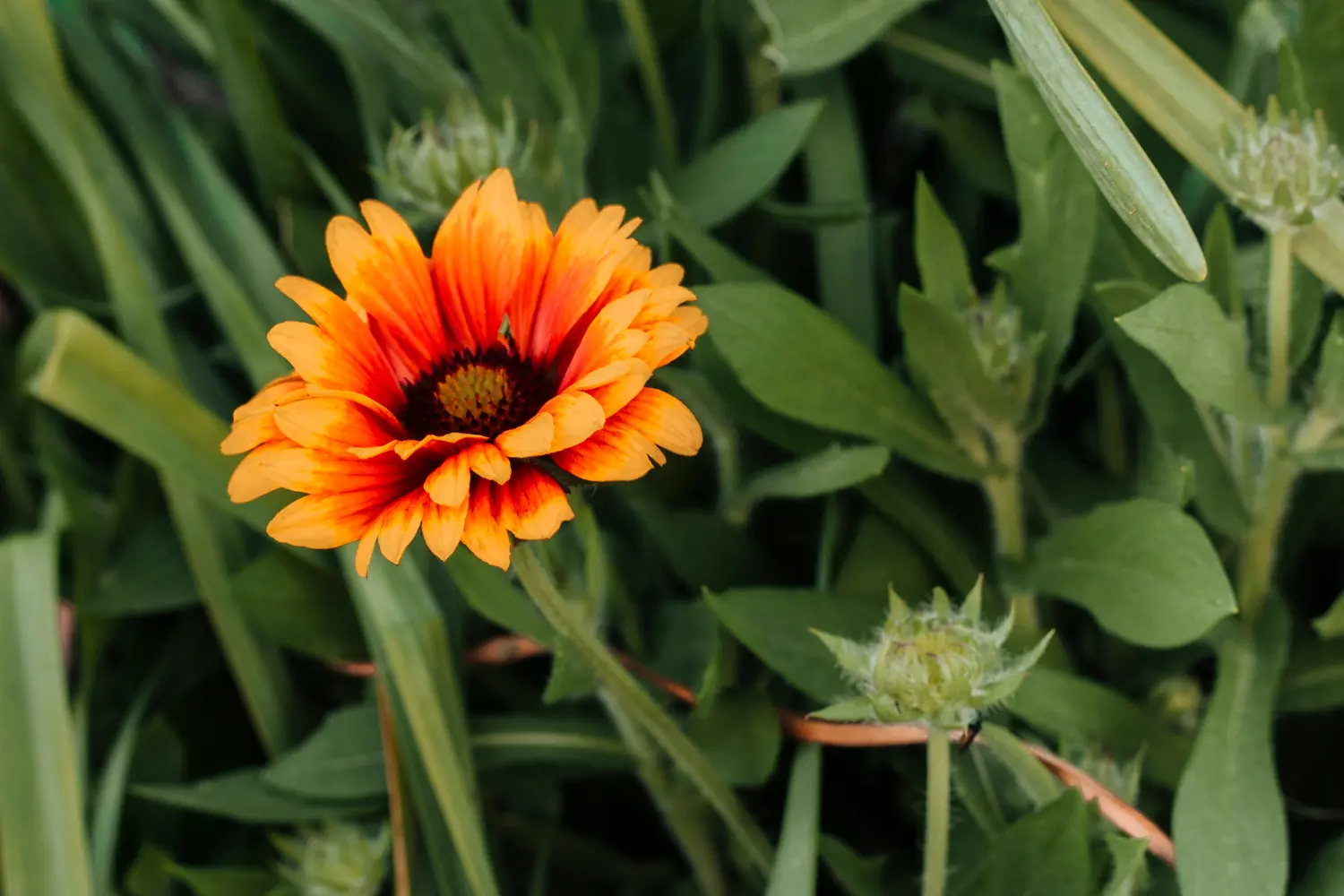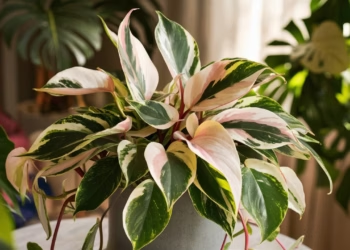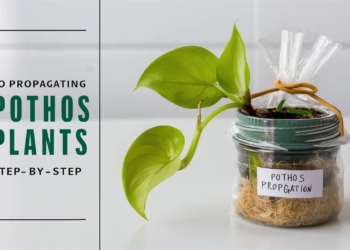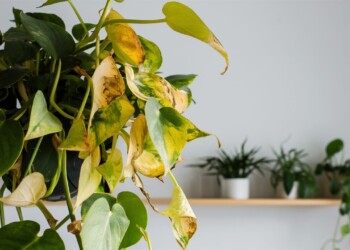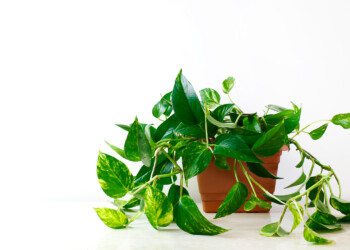Welcome, fellow plant enthusiasts, to the untimed indoor handbook for African daisy plant care! If you’re on a quest for the perfect blooms to grace your indoor oasis, look no further. African daisies, with their dazzling array of colors and cheerful disposition, are sure to captivate any green thumb. In this guide, we’ll delve into the intricacies of nurturing these floral wonders within the cozy confines of your home. Get ready to unlock the secrets to fostering healthy, thriving African daisy plants that will brighten up your space year-round!
Table Of Contents
Getting to Know Your African Daisy
African daisies, scientifically known as Osteospermum, hail from the sunny landscapes of South Africa. These resilient beauties belong to the daisy family (Asteraceae) and are cherished for their striking, daisy-like flowers that come in an array of hues, including purple, pink, white, and orange. African daisies exhibit a rapid growth rate, typically flowering approximately two months post-sprouting from seeds. Thriving best in zones 10 to 11, these tender perennials are often cultivated as annuals in regions characterized by different climatic conditions.
Common Name
African daisy, cape daisy, osteospermum
Botanical Name
Osteospermum spp.
Family
Asteraceae
Plant Type
Perennial, annual
Mature Size
1–3 ft. tall, 1–2 ft. wide
Soil Type
Moist, well-drained
Soil pH
Acidic
Bloom Time
Spring, summer, fall
Flower Color
Purple, pink, yellow, orange, white
Hardiness Zones
10–11 (USDA)
Native Area
Africa, Asia

Types of African Daisy
A diverse array of African daisy species and cultivars offers an extensive palette of colors and forms to enrich garden landscapes. Notable varieties include:
- Osteospermum ‘Passion Mix’: Compact plants with a variety of colors (pink, purple, rose, and white), featuring blue centers and renowned for heat tolerance.
- Osteospermum ‘4D’: Characterized by fluffy, tufted centers and day-long blooming even in hot weather.
- Osteospermum ‘FlowerPower Spider White’: Sporting spoon-shaped white and lavender petals with a gold center.
- Osteospermum ‘Lemon Symphony’: Butter-yellow petals with a purple center and orange eye.
- Osteospermum ‘Pink Sugar’: Pink and orange petals transitioning into a gold center.
- Osteospermum ‘Ravers Hearts and Tarts’: Vibrant orange and pink flowers.
- Osteospermum ‘Sideshow Copper Apricot’: Striking pale apricot flowers with a purple center disk.
- Osteospermum ‘Soprano White’: White blooms with a blue center bordered by purple and yellow.

African Daisy Care
1. Choosing the Perfect Spot
The first step in African daisy plant care – finding the ideal location for your botanical buddy to thrive!
- Optimal Light: African daisies crave sunlight like a sunbather on a tropical beach! Place your plant in a spot where it can bask in bright, indirect sunlight for at least 6-8 hours a day. A south or west-facing window is ideal for providing the necessary light without scorching those delicate petals.
- Temperature Tolerance: These resilient plants can handle a wide range of temperatures but prefer moderate to warm conditions. Keep them cozy and comfortable in a room where temperatures range between 65°F to 75°F (18°C to 24°C) during the day and slightly cooler at night.
- Air Circulation: Like a breath of fresh air, good ventilation is key to keeping your African daisy happy and healthy. Ensure adequate airflow around the plant to prevent the onset of pests and diseases.
2. Watering Wisely
Ah, hydration – the elixir of life for plants and humans alike! When it comes to watering your African daisy, a delicate balance is the name of the game.
- Moisture Meter: Get to know your plant’s watering needs by keeping an eye on the soil moisture. Use a moisture meter or simply stick your finger into the soil – if it feels dry about an inch deep, it’s time to water.
- Thirsty Thursdays: Unlike some thirsty souls, African daisies prefer a relaxed watering schedule. Aim to water deeply once a week, allowing the soil to dry out slightly between waterings. Avoid soggy soil, as it can lead to root rot – a real buzzkill for your botanical buddy!
3. Fertilizing Fun
Just like humans need their vitamins, African daisies benefit from a nutritious diet to fuel their growth and blooming prowess.
- Feeding Frenzy: During the growing season, from spring to fall, treat your African daisy to a monthly feast of balanced fertilizer. Opt for a water-soluble fertilizer diluted to half-strength to prevent nutrient overload.
- Easy Does It: Remember, moderation is key when it comes to fertilizing. Overdoing it can result in excessive foliage growth at the expense of flower production – not the desired outcome!
4. Pruning Practices
Trimming and tidying – it’s all part of the grooming routine for your African daisy plant.
- Deadhead Drama: Keep those blooms coming by deadheading spent flowers regularly. Simply snip off faded blooms to encourage new growth and prolong the flowering season.
- Shape Up: To maintain a tidy appearance and encourage bushy growth, prune your African daisy occasionally, removing leggy stems and wayward growth.
5. Pest Patrol
Like uninvited guests at a party, pests can wreak havoc on your African daisy’s well-being if left unchecked.
- Vigilant Vigilance: Keep a keen eye out for common pests such as aphids, spider mites, and whiteflies. If detected, promptly evict these unwanted visitors using organic insecticidal soap or neem oil.
- Quarantine Zone: Isolate any infested plants to prevent the spread of pests to your entire indoor garden. Ain’t nobody got time for a pest party!
6. Diminished Blooms in Midsummer
In regions characterized by hot, humid climates, African daisies may undergo temporary dormancy during midsummer heatwaves. Planting specimens in partial shade and maintaining optimal moisture levels can mitigate heat-induced dormancy, allowing plants to rebound as temperatures moderate.

Troubleshooting Bloom Issues
Encouraging Blooming
While African daisies typically exhibit robust blooming habits, several factors may impede flower production. Address the following considerations to promote optimal blooming:
- Nutritional Deficiencies: Increase fertilization frequency to every two to three weeks if plants display inadequate blooming.
- Environmental Stressors: Mitigate extreme heat and dryness by providing shade and supplemental watering as needed.
- Light Insufficiency: Ensure adequate sunlight exposure to prevent leggy growth and promote prolific flowering.

And there you have it, folks – your comprehensive African daisy plant care guide for untimed indoor success! By following these simple yet effective care tips, you’ll be well on your way to cultivating thriving African daisy plants that will infuse your indoor space with bursts of vibrant color and botanical bliss. So go ahead, unleash your inner green thumb and let your African daisies dazzle and delight – the untimed indoor handbook is your ticket to floral fulfillment!
FAQs
Do African daisies need full sun?
African daisies thrive best in full sun, although they can tolerate partial shade. However, planting them in full sun will encourage more profuse blooming, whereas partial shade may result in fewer flowers.
How do I care for African daisies?
To care for African daisies, provide them with well-draining soil and plant them in a location with full sun. Water them regularly, ensuring the soil remains consistently moist but not waterlogged. Deadhead spent blooms to encourage continuous flowering, and fertilize them with a slow-release fertilizer to support optimal growth.
Why are my African daisies dying?
African daisies may be dying due to various reasons, including overwatering, underwatering, poor soil drainage, pests, diseases, or environmental stressors. Evaluate factors such as watering practices, soil quality, sunlight exposure, and the presence of pests or diseases to determine the cause of the decline and take appropriate corrective actions.
How to collect African daisy seeds?
To collect African daisy seeds, allow the flowers to fade and dry naturally on the plant. Once the flower heads have dried, carefully remove them and extract the seeds. Store the seeds in a cool, dry place until you are ready to plant them. Ensure the seeds are fully dry before storage to prevent mold or fungal growth.
How do you keep daisies alive?
To keep daisies alive, plant them in well-draining soil and place them in a location with ample sunlight. Water them regularly, ensuring the soil remains consistently moist but not waterlogged. Deadhead spent blooms regularly to encourage continuous flowering, and fertilize them with a balanced fertilizer during the growing season .
Do African daisies need shade?
African daisies can tolerate partial shade but prefer full sun for optimal growth and blooming. While they can survive in partial shade, it may result in fewer flowers compared to when grown in full sun .
